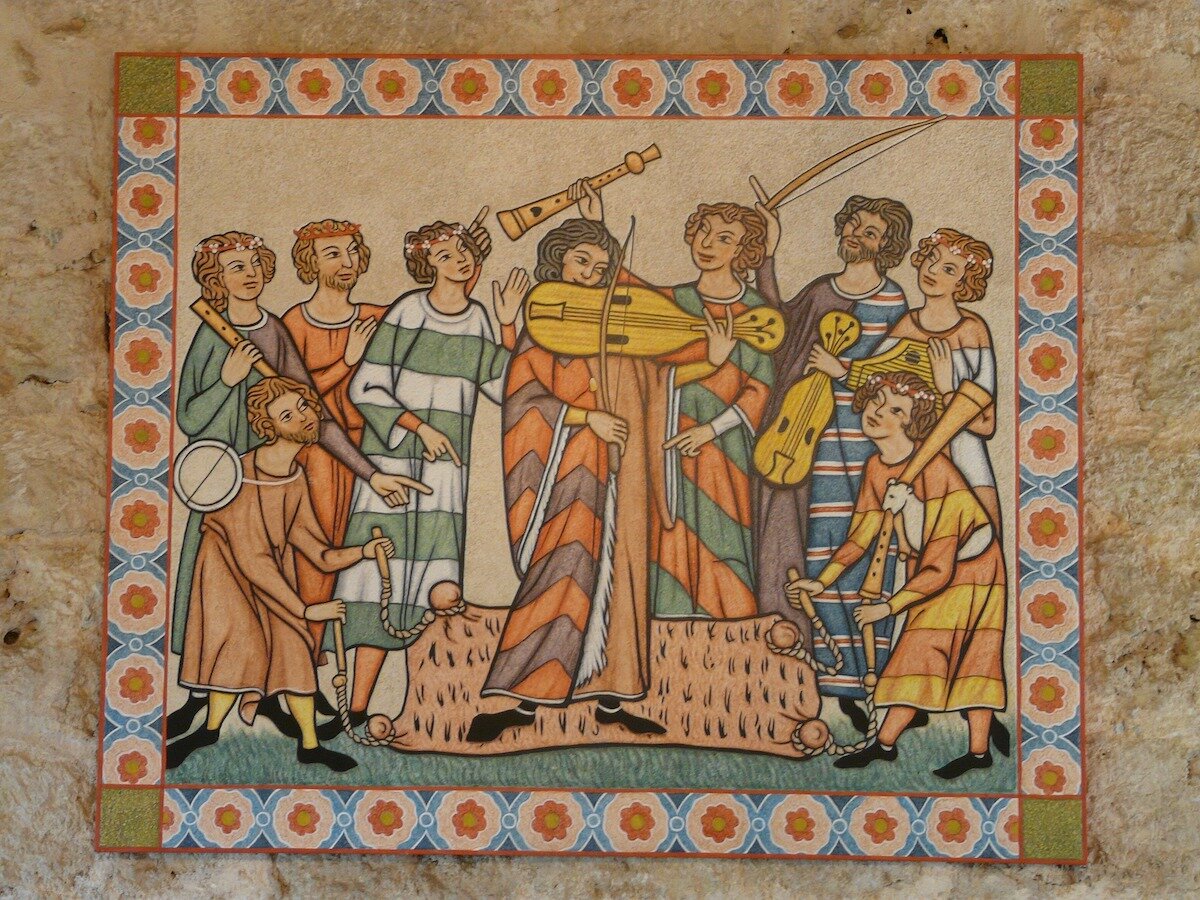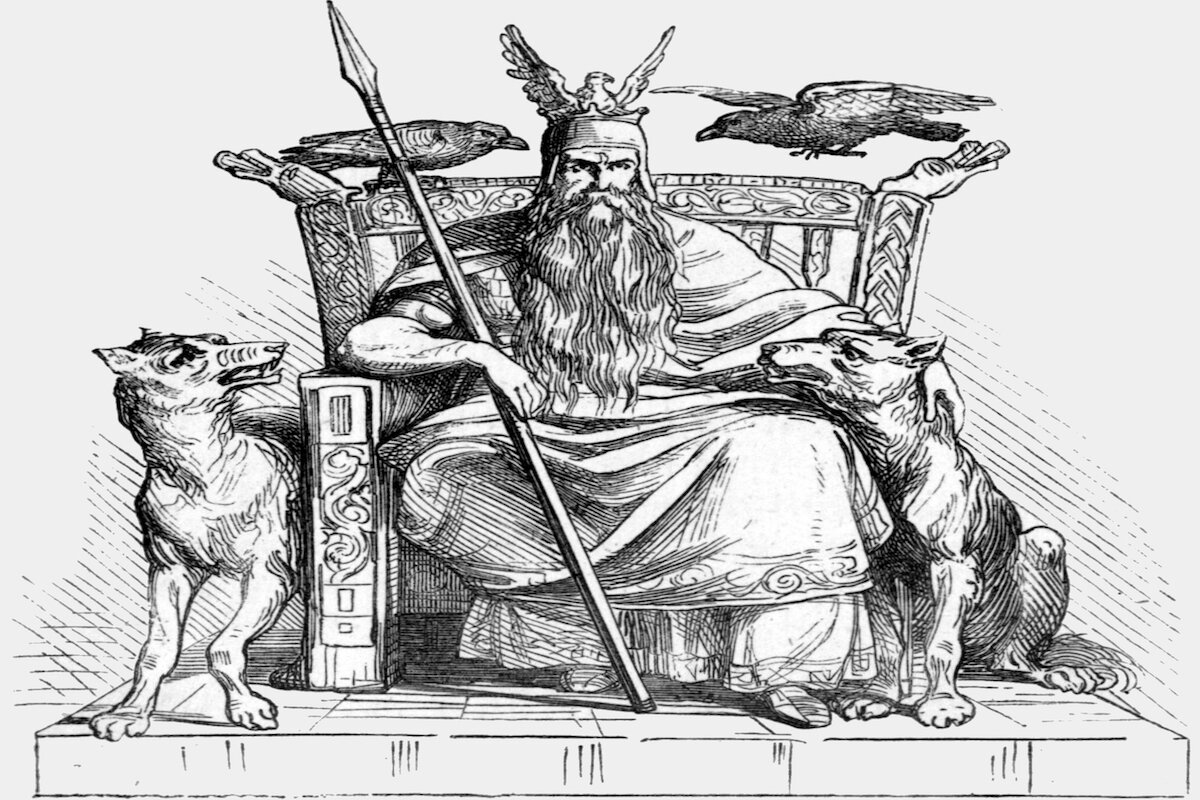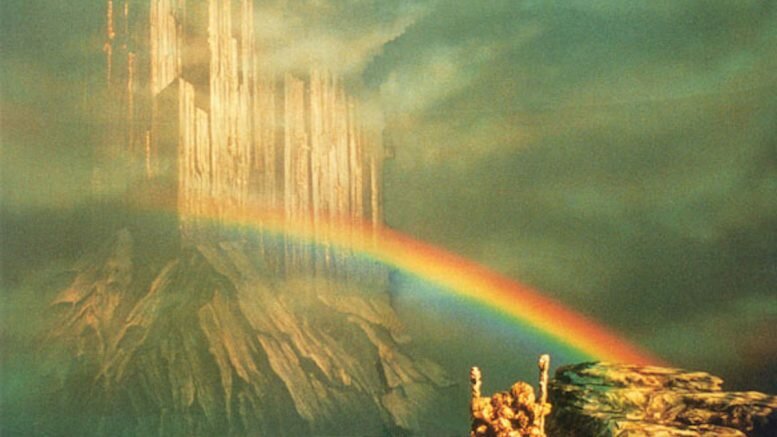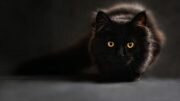The religion of Vikings was the most prevalent belief system in Nordic countries during the Viking Age, which lasted from about the 8th century to the mid-11th century.
Forming an accurate and in-depth picture of the religion of Vikings is a challenge since it had no written scripture and belonged to a predominantly oral society.
So, how do we know about Viking religion today?
Stories of Norse gods, mythology, and religious beliefs were passed on mainly through minstrel songs for centuries.
These tales, called Eddic poetry, were created and modified across different times, by different people, in different regions.
They are not attributed to any individual authors and remain anonymous in origin.

The religion of Vikings was also transmitted through Skaldic poetry, which was recited to the court. Skaldic poems had strict meters and many kennings – metaphorical compound expressions such as ‘wave-horse’ for ‘ship.’
With authors unknown to us, the Eddic poems were compiled in the medieval Icelandic manuscript Codex Regius from the 13th century. Inside it is the Poetic Edda, which likely originated during – and even before – the Viking Age.
The creators behind the Codex Regius are unknown. The work was not discovered until 1643 when it came into the possession of Icelandic bishop Brynjólfur Sveinsson who gifted it to then-king Frederick III of Denmark.
Another key Viking religion source is the Prose Edda; also called Snorri’s Edda. Written by Icelandic historian Snorri Sturluson (1179-1241), this work was also a compilation of Viking mythology and folktales.
Keeping in mind that it was written by a Christian for a Christian audience, some of the stories were likely accordingly altered.
Snorri’s Edda and other later sources, while altered in context, offer structured accounts of the religion of Vikings. On the other hand, Eddic and Skaldic poetry, are older, more enigmatic, and not systematic at all – but they give a glimpse into Viking religion as its practitioners experienced and lived it.
Archeological evidence, as always, plays a crucial part in deciphering times bygone. Religious services like mass did not exist nor did buildings like churches, but some evidence exists of cultic activity sites. For example, an account by German chronicler Adam of Bremen (c. 1045 – c. 1085) tells of a temple at modern-day Uppsala, Sweden, in which human and animal sacrifices were carried out to Norse gods.
He wrote that the offerings were part of large feasts. Though a temple at the site hasn’t been confirmed, other buildings, including a large hall, were found and dated to the Viking Age.
Put together, both types of written sources and archeological evidence have given us a substantial impression of ancient Nordic religion, the principal beliefs of Vikings, and the Norse gods.
Norse mythology: A (quick and concise) overview
Before there was time or space, there existed a great primordial abyss called Ginnungagap (Old Norse: “yawning void”), out of which nine realms would form.
The first was Muspelheim, land of fire and home of giants, guarded by the flaming sword-wielding giant Surtr.
Next, to the north, Niflheim formed, land of ice and home to the Hvergelmir spring from which the primordial rivers soon began to flow.
These rivers flowed into the yawning void where they, like their home realm Niflheim, became frozen. From fiery Muspelheim, embers and sparks flew out of the void and drifted toward the frozen rivers. When the two elements met – the ice began to melt, and out of its droplets, mighty Ymir was born, the first of the frost-giants.
Next, the ice droplets formed the cow Auðumbla, whose milk Ymir fed on. Auðumbla began to lick the primordial ice to sustain herself – when from it emerged the hair of a new being. After a few days, the entire man-like being was uncovered, and he was called Búri. Búri soon fathered a son, Borr, who married Bestla, daughter of the giant Bölþorn.
Borr and Bestla had three sons, the eldest being Odin, the second-oldest Vili, the youngest Ve.
The three brothers decided to kill Ymir. They took the giant’s body to the center of the void to create more realms. With his blood, they crafted water, with his flesh land, with his bones mountains, and with his teeth rocks.
The brothers gave the giants a realm to live in called Jotunheim. Then, to protect themselves against the giants, Odin, Vili, and Vi built the fortified realm of Midgard (also known as planet Earth) from Ymir’s eyebrows.
From driftwood, the brothers then formed new life on Midgard – humans; a man and a woman. Odin gave them breath, Vili intelligence and emotion, and Ve form, speech, sight, and hearing. Their names were Ask (Old Norse askr, meaning ash tree) and Embla (Old Norse almr, meaning elm).
Finally, a magnificent realm for the brothers to reside in, named Asgard, was created at the center of the world.
Odin became the ruler of the realms and married beautiful Frigg (which many today equate to Freja).
Odin and Frigg’s children became the Æsir – the Norse gods who make Asgard their home. Thus, Odin was the Allfather, ancestor, and father of gods and humans alike.
The gods built a bridge called Bifrost (which looks like a rainbow) to connect the worlds. Heimdallr, the watchman of the Æsir, guards the Bifrost against the giants.
He carries a horn named Gjallarhorn, whose blasts are heard in all the realms.
In all, nine realms, all connected by the great ash tree Yggrdasil, were created as homes for the different beings of the universe. They are:
Asgard – Realm of the Æsir
Alfheim – Realm of the elves
Hel – Realm of those who did not die in battle
Jotunheim – Realm of the non-fire giants
Midgard – Realm of the humans
Muspelheim – Realm of fire and the fire-giants; primordial
Niðavellir/Svartalfheim – Realm of the dwarves and/or dark elves
Niflheim – Realm of ice; primordial
Vanaheim – Realm of the Vanir, wise gods of fertility
As time passed, Odin began to prepare for Ragnarok, the end of the world.
Among a series of tasks he embarked on to gain knowledge and strength in order to be ready, Odin sent his Valkyries (divine warrior maidens) to every battle across the realms. The Valkyries chose the most heroic fallen fighters and brought them to Valhalla – Odin’s mighty feast hall in Asgard. In Valhalla, the fallen warriors, known as Einherjar, would commence a friendly battle with each other each day.
When Ragnarok came, they would fight with the gods against the evil forces.

Odin always sat at the head of Valhalla with two wolves; Geri and Freki, and two ravens; Huginn (from Old Norse “thought”), and Muninn (Old Norse “memory” or “mind”), who gathered information for the Allfather across the realms each day.
Odin and Frigg had a number of divine children.
Thor, the protector of humankind and god of thunder, was one of them – and he was the strongest of the Æsir. Married to the goddess Sif, Thor wielded Mjolnir, a hammer which crushed all in its path and always returned to its owner.
Thor was known for his temper but was usually a benevolent god who often clashed with the god of mischief and son of giants, Loki.
One day, pranks turned to war, and war turned to Ragnarok. After a battle of epic proportions, survivors rebuilt the world.
But not all evil forces were eliminated – a second Ragnarok is said to arrive at some point in time…
The arrival of Christianity in the Nordic countries
Some believe that the religion of Vikings disappeared when Christianity was introduced to the region in the mid-11th century.
It did not, however. At first, Vikings stayed polytheistic, simply adding the Christian god to their Norse god pantheon. Christian and Viking traditions and beliefs were practiced side by side, but some Vikings continued to use solely the religion of the Norse gods in secret.
Throughout the years, the Viking religion died out for the most part. However, pockets of practitioners stayed active, and revivals sporadically occurred.
Various communities practice the Viking religion today.
Viking religion today
Wondering about the modern-day coattails of Norse religion, that is, the religion of Vikings?
Today, this belief is called Asatro, a term popularized in the 19th century. The Vikings, to our knowledge, didn’t have a name for their religion until Christianity came. So, the Vikings called their former religion “the old way” and Christianity “the new way.”
The modern version of this religion isn’t so much a direct continuation of the ancient practices, but rather a reinterpretation. Today’s practitioners of the Viking religion would tell you there’s no formal conversion process and that the choice is largely a spiritual and personal experience.
Still, organized groups, some of which are formally recognized by governments, do exist.
Modern Viking religion followers eat and toast to the Nordic gods, often in nature, as their predecessors did. They also gather and make offerings at ancient Viking sites, such as burial mounds.
Formally recognized Viking religion associations exist today across the Nordic countries, and more sparsely, worldwide. Three examples are:
Forn Sidr – the largest Viking religion association in Denmark, established in 1997. Form Sidr has about 600 members and is the only such group officially recognized (since 2003) in Denmark.
Ásatrúarfélagið or Ásatrú Fellowship – a Viking religion association in Iceland, established in 1972. Ásatrúarfélagið was officially recognized in 1973. Only those from or living in Icelanders can join, but all are invited to participate.
Åsatrufellesskapet Bifrost – a Viking religion in Norway, established in 1996. Åsatrufellesskapet Bifrost has hundreds of members and was officially recognized also in 1996.
In any case, until the second Ragnarok comes… Toast to the end of the first! Skal!
Source: Norway Today
Do you have a news tip for Norway Today? We want to hear it. Get in touch at info@norwaytoday.no






Leave a comment